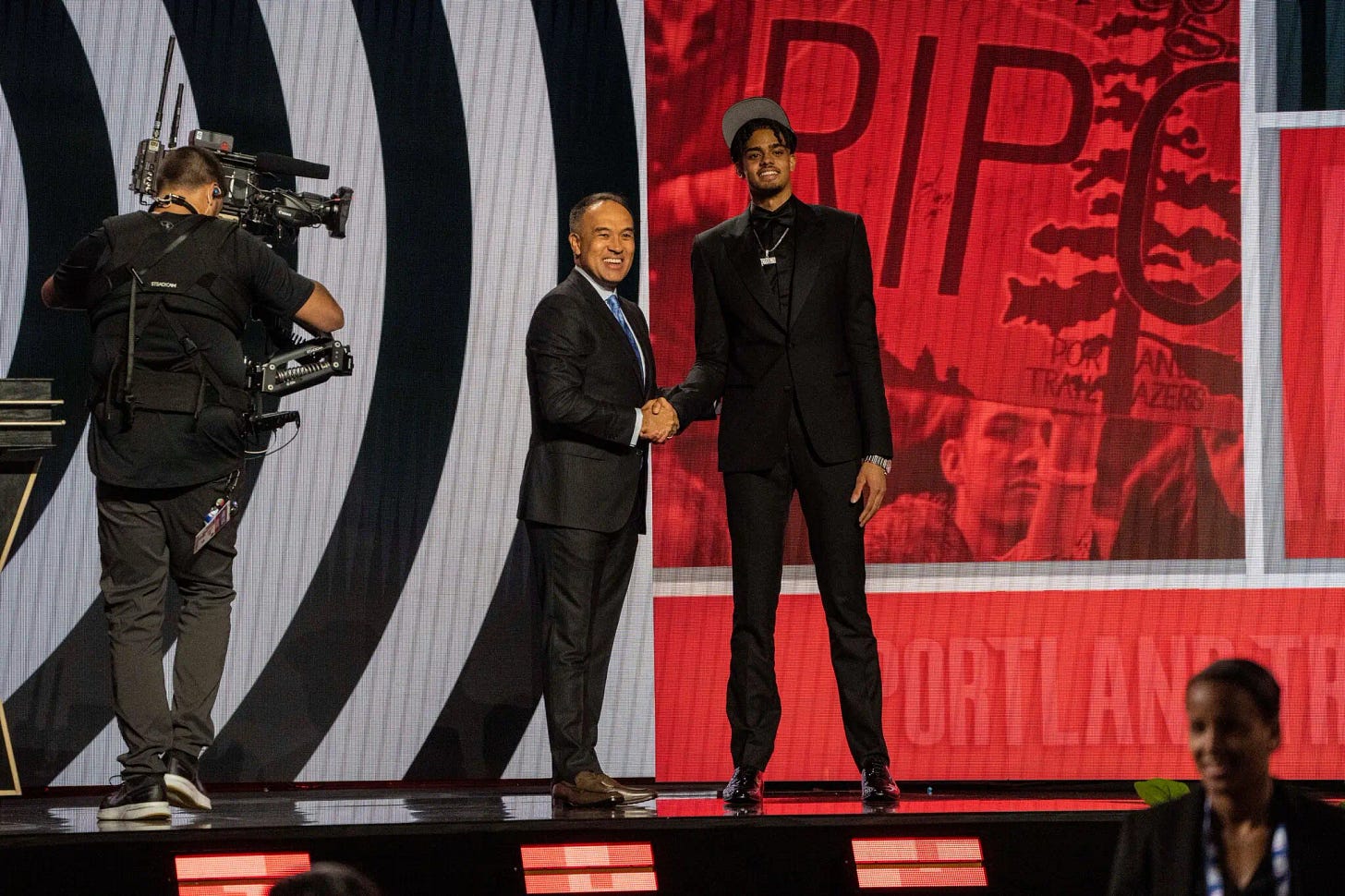For those of you who don’t know, the NBA draft consists of two rounds. And since 1989, both rounds had been held on the same night. That is before the new NBA collective bargaining agreement, ratified in June 2023, included language making the draft a two-day event, one round per night.
In principle, I understand the reasoning for creating a two-day NBA Draft. Take advantage of one of the marquee events on the NBA calendar for as long as you can. It generates more viewership and more ad dollars. It also gives teams extra time to make trades and increases visibility for second-round draft picks. In theory, and in practice, it makes perfect sense. (Maybe the NBA should also give its NBA champions more visibility. Just a thought.)
Anyways, the idea is great. There’s upside, and next to no downside. So, how well did the NBA and its broadcast partner, ESPN, execute on the idea? I have thoughts.
On the second night of the NBA Draft, the ESPN broadcast crew consisted of host Malika Andrews and analysts Bobby Marks, Bob Myers, Jay Bilas, and Brian Windhorst.
Malika Andrews is ESPN’s go-to NBA studio host. Aside from the fact that she’s not a Warriors propaganda spreader despite being from Oakland, Andrews is good at her job. I wish she spread the gospel of Steph Curry a little more. Moving on.
Bobby Marks’ official title at ESPN is NBA Front Office Insider. Like his title suggests, Marks serves as fans’ primary resource for all salary cap-related questions in light of a free agency acquisition, a trade, or any other transaction. The NBA Draft consists of a lot of transactions, so his analysis was helpful.
Bob Myers is a studio and in-game analyst for ESPN who’s better known for his days as the General Manager of the Golden State Warriors. Myers is credited with helping to build the dynastic Warriors roster that won four championships (he did not draft Steph Curry, as he joined the Warriors in 2011). Myers joined ESPN in 2023 after stepping down from his post in Golden State.
Jay Bilas is ESPN’s top college basketball analyst. He was on set during the draft to talk about the scouting report for each player. He was, and is, uniquely able to discuss the strengths and weaknesses of every draftee’s game. His presence and expertise were great.
Brian Windhorst is a Senior NBA Writer at ESPN, as well as, in my opinion, Disney’s premier on-air NBA talent. He’s one of the platform’s premier prognosticators and he’s entertaining, knowledgeable, and witty. He was a welcome addition to any set when I turn on the TV.
The Good:
This group was uniquely able to assess draft selections and trades from every angle. They discussed what a player brings to his new team, how it affects the cap sheet and roster management, and what the draft picks might be a precursor to from the organization’s perspective. They also had great chemistry together. Overall, the ESPN broadcast team did an excellent job of covering the intrigue of the NBA Draft from every angle.
The Bad:
The NBA Draft needs to happen after the start of the new league year on July 6. I’m sure there are legal technicalities as to why it’s not this way, but Adam Silver and the 30 billionaire NBA owners all wield enough power to influence change here.
This year, just 4 of the 29 second-round draft picks were used by their original owner. In other words, 25 teams traded their second-round draft pick in advance of the NBA Draft last week. (The New York Knicks had to forfeit their pick after the league deemed they illegally tampered with Jalen Brunson before his 2022 free agency.)
But because the league year doesn’t technically start until July 6, those trades can’t be ratified until that date, which is two weeks after the draft. As a result, they are “proposed trades” until then. But no trades ever get vetoed anymore.
And in the meantime, it’s so odd watching the NBA Deputy Commissioner Mark Tatum announce picks for the original owner of said pick (i.e. not the team who’s actually selecting the player). After Mark Tatum announces the pick, we then watch draftees put on a team hat for an organization they will never play for. It’s just silly.
Conclusion:
Good execution by ESPN, bad execution by the league.
The production is complicated when it doesn’t have to be. It seems so avoidable, disorganized, and weird. What’s the point? It probably tuned out casual fans who might have been flipping channels and otherwise interested in watching. My girlfriend is a testament to this. She’s a casual fan and was very confused after watching for 5 minutes.
The ESPN broadcast team was excellent, but the NBA needs to move the draft so it’s after the start of the new league year on July 6. Thanks for reading.





Great narrative Grammy and very informative. Let’s talk some NBA next week when I see you.